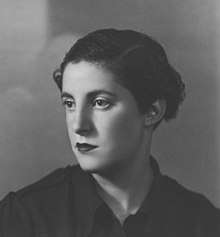María Rosa Urraca Pastor
María Rosa Urraca Pastor (1900–1984) was a Spanish Carlist politician and propagandist. She is known mostly as a thrilling orator, one of the best public speakers of the Second Spanish Republic. She is also noted as head of Delegación Nacional de Frentes y Hospitales, the Nationalist wartime organization catering for the wounded.
María Rosa Urraca Pastor | |
|---|---|
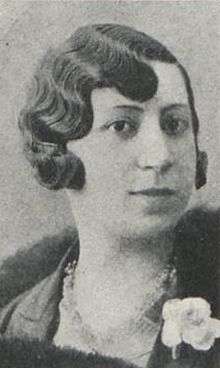 | |
| Born | María Rosa Urraca Pastor 1900[1] Madrid, Spain |
| Died | 1984 (aged 83–84) Barcelona, Spain |
| Nationality | Spanish |
| Occupation | teacher |
| Known for | orator, propagandist, politician, nurse |
| Political party | Comunión Tradicionalista, Falange Española Tradicionalista |
Family and youth
María Rosa Urraca Pastor's paternal family originated from La Rioja.[2] Her grandfather, Modesto Urraca Victoria,[3] a native of Grañón, was the first reservoir keeper of the pantano de la Grájera.[4] Her father, Juan Urraca Sáenz (1873-1965),[5] was born in Nalda, near Logroño. He joined the army and took part in unspecified combat missions, probably during the Spanish–American War.[6] Back in Spain he first served in Madrid,[7] assigned later to Burgos[8] and finally in the early 20th century to Comisaría de Guerra de Bilbao. In 1913 he was transferred to Cuerpo Auxiliar de Intervención Militar, an intendancy and fiscal administration structure of the military. He first served as modest rank of auxiliar de tercera clase,[9] shortly before retirement promoted to auxiliar mayor in 1928.[10] At unspecified time he married Rafaela Pastor Ortega (died 1941)[11] a native of Villahoz (Burgos).[12] It is not clear how many children the couple had; none of the sources consulted refers to María's siblings.[13]
Though María Rosa was born in Madrid, at the age of 3 she followed her father's professional lot and in her early childhood the family moved from the capital to Burgos[14] and then to Bilbao.[15] She was raised in fervently Catholic ambience, as her father was member of a number of local religious societies like Hermandad de Nuestra Señora de Valvanera;[16] he passed the pious zeal to the daughter.[17] Nothing is known of political views of María's parents, except that her father was a non-Carlist monarchist.[18] Another feature of her upbringing was profound respect for the military, considered „backbone of the nation".[19] Her early formation was completed by books; she later admitted that at the age of 14 she had been profoundly moved by the works Concepción Arenal[20] and Graciano Martínez.[21] The former advocated active public stance of women in the modern society; the latter, a Catholic friar, pursued the regenerationist path by focusing on social work of the Christians, also underlining the role of females.
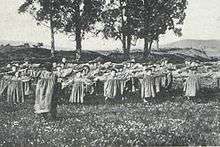
It is not clear where María received her primary education; she later frequented Escuela Normal Superior de Maestras de Vizcaya, graduating in 1923.[22] It is also not evident whether she has ever pursued the university path; herself she claimed having studied Filosofía y Letras, though neither the timing nor location are known; according to her later account, she followed the classes of Miguel de Unamuno and Julián Besteiro.[23] Vivacious, straightforward and vibrant,[24] Urraca commenced her professional career by teaching at La Obra del Ave-María,[25] a network of Catholic schools founded by Andrés Manjón and focused on poverty-stricken children, at unspecified time in the 1920s acting as directora of the Bilbao branch.[26] She also became auxiliary teacher at Escuela Normal de Bilbao, at that time considered „universidad femenina".[27] Urraca Pastor has never married and has had no children.
Early public activity
_-_Fondo_Car-Kutxa_Fototeka.jpg)
Urraca first spoke publicly in 1923 during Semana Pedagogica in Bilbao.[28] In the mid-1920s she entered Acción Católica de la Mujer;[29] her insatiable character and a knack for letters produced the 1925 appointment to manager of Boletín de la ACM de Vizcaya.[30] Some scholars claim that by the end of the decade she became president of the entire Bilbao section of ACM.[31] Urraca got enthusiastically involved in a number of social, charity and educational initiatives of the organization, at that time very much encouraged by the Primo de Rivera dictatorship.[32] In the mid-1920s she became engaged in the nascent radio broadcasting; she was noted by the press as occasionally on air giving lectures on cultural subjects[33] and commenced close co-operation with T.S.H., a weekly issued by Asociación Radio Española. She also admitted contributing to El Sol, a Madrid daily of Liberal leaning, though nature of this engagement is rather obscure.[34]
The young María Rosa became a role model for a new breed of Catholic female public activists,[35] opposed to the old-style Catholic wife and mother epitome and throwing themselves in social and education work. A number of senior nationwide ACM militants – including her idol, Carmen Cuesta[36] - entered the primoderiverista quasi-parliament, Asamblea Nacional Consultiva; riding the wave of regime's modernizing attempts and its support for females activists, Urraca was appointed to the official labor administration.[37] In 1929 she was nominated Inspectora De Trabajo,[38] which converted her standing from a Catholic social worker to a state official. She took part in schemes like Patronato De Previsión Social de Vizcaya and Patronato Nacional De Recuperación De Inválidos Para El Trabajo.[39] She started to address social issues by publishing in the press, be it local Biscay titles like El Nervión, La Gaceta del Norte and El Pueblo Vasco[40] or national ones like La Nación.[41] Urraca also started to gain recognition beyond Biscay: professional duties brought her to other regions[42] and ACM assignment enabled her to take part in 1929 Congreso Femenino Hispanoamericano, staged by the organization in Seville.[43]
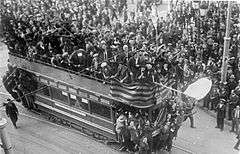
Urraca considered the fall of the monarchy a national disaster.[44] Almost immediately she engaged in public rallies either in favor of the monarchy[45] or protesting against militantly secular policy of the Republic.[46] Already in May 1931 she was detained and fined 500 pesetas for promoting a meeting classified as non-constitutional conspiracy.[47] She seemed politically disoriented; due to her earlier engagements she was considered sort of a socialist,[48] ACM record made her look towards Christian organizations, in the April 1931 elections Urraca worked as propagandist supporting Alfonsine candidates[49] and she neared José María Albiñana and his Legionarios.[50] In late 1931 she co-organized Agrupación de Defensa Femenina, a conservative female organization grouping Alfonsine monarchists, Carlists and the Basque Emakumes,[51] and was later asked to write the program draft.[52] Extremely active, she helped to organize 50 meetings during four months.[53] In 1932 she was fired as labor inspector.[54]
Carlist
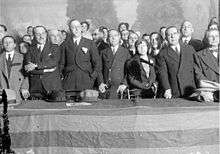
When detained, active in joint right-wing women groupings or collecting funds to pay fines, Urraca started to meet and forged closer relations with female Carlists;[55] she was particularly impressed by María Ortega de Pradera, local ACM leader and wife of the Traditionalist theorist Victor Pradera.[56] She later claimed having been fascinated by their unshaken Christianity, valiance and fortitude,[57] especially against the bewilderment of the Alfonsine monarchism.[58] During the winter of 1931-1932 she neared the Carlists, starting to appear on their public rallies and quickly becoming sort of a rising star of the Carlist propaganda; her earlier combined experience in ACM, broadcasting, schools and newspapers turned her into a thrilling orator.[59] Already in 1932 she was speaking at Carlist and Catholic meetings all over Spain,[60] appearing among top Traditionalist politicians and most distinguished female activists.[61] Urraca contributed also to Carlist press,[62] activity which triggered further fines.[63] In 1933 she was already sort of a Carlist celebrity, acclaimed by their political leaders.[64] and called omnipresent.[65] She was noted by political opponents: Indalecio Prieto ridiculed her in the press stating that "the cavemen got their miss",[66] to which the Carlist Requetés responded by greeting her with "Long Live Miss Cavemen" cry.[67]
In the 1933 elections she ran for the Cortes from Gipuzkoa as Carlist representative in Unión Regionalista Gipuzcoana;[68] greeted by the Republican press as „candidatura de la Edad Media, típicamente troglodita",[69] she narrowly missed the election.[70] Embittered by backstage political haggling[71] Urraca was disillusioned by parliamentary politics;[72] she went on with hectic propaganda activity across Spain, gaining nationwide recognition as an inflammatory and thrilling orator and greeted by homages from the Right and abuse from the Left.[73] As Carlist leaders realized how important the female votes were[74] she gained weight within the movement and entered correspondence with the Carlist queen, María de las Nieves.[75]
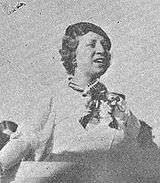
Following organizational shakeup of the party executive in 1934, the new leader Manuel Fal entrusted her with re-modeling the Secciones Femeninas of Comunión Tradicionalista.[76] Female groupings, known as Margaritas, operated as affiliated with local circulos; apart from boosting membership and launching new activities, Urraca was entrusted with turning the organization from very loose federation into a nationwide structure; since the task has never been fully completed she did not assume formal presidency,[77] though some scholars name her de facto leader.[78] Up to 1936 Margaritas recruited 23,000 women,[79] mostly in Valencia, Navarre and Vascongadas.[80] Urraca encouraged them to take courses in nursing (and took it herself),[81] getting ready to the anticipated violent overthrow of the Republic. In 1936 she unsuccessfully run for the parliament again, this time from Teruel.[82] Urraca continued her favorite social activities setting up Socorro Blanco, the Carlist relief organization.[83] In the movement's press she campaigned for Spiritual Crusade of Prayer.[84] In April 1936 she was detained for illegal possession of a pistol[85] but was smuggled out of custody and spent the last few months of peace hiding in a village of Arcos de la Llana near Burgos.[86]
Civil war
_-_Fondo_Mar%C3%ADn-Kutxa_Fototeka.jpg)
In Aranda de Duero Urraca joined the Navarrese troops commanded by García Escámez and heading for Madrid.[87] On the intermittent basis she served as nurse on the Guadarrama front;[88] during breaks[89] she engaged in propaganda work[90] and threw herself into organizing Carlist medical services, mostly recruiting women as nurses and auxiliary staff. November 1936 back in Guadarrama[91] she spent Christmas among the soldiers,[92] but moved – still as a nurse - to the Northern front in early 1937, partially present during the Nationalist conquest of Vascongadas. In immediate vicinity of the frontline Urraca made a picturesque figure; apart from typical medical activities she dispensed cognac at arbitrary doses to the wounded.[93] According to some testimonies, she inflicted her Christian compassion upon the otherwise fanatical Carlist soldiers and prevented Nationalists from executing the Republican prisoners;[94] she also publicly defended some captured Republicans accused of crimes.[95] Other accounts point to her cruelty and suggest that she was co-responsible for Nationalist atrocities,[96] especially for executions of Basque priests.[97] She is also quoted writing that the orphaned Republican children should not be treated the same way as the Nationalist ones.[98]
In late April called to Salamanca and received by Franco,[99] she entered Sección Femenina of the newly created state party and along Pilar Primo de Rivera and Mercedes Sanz Bachiller became one of its leaders. Urraca assumed management of Delegación Nacional de Frentes y Hospitales,[100] one of three branches of the Sección[101] and entrusted with catering for the wounded. In FET she emerged as one of 3 Carlists among 14 heads of all Delegaciones. In October 1937 she was appointed - as one of 11 Carlists[102] - to the newly established, 50-member Consejo Nacional,[103] which triggered her expulsion from Comunión Tradicionalista.[104] Engaged in organization and propaganda work, she kept visiting frontlines[105] and was fêted along Nationalist heroes like Moscardó.[106] Paradoxically, in the Republican media Urraca enjoyed no lesser popularity than in the Nationalist ones, mocked and ridiculed by the enemy press.[107]
In Sección Femenina Urraca clashed with Pilar Primo de Rivera. Apart from the rivalry of strong female personalities, the conflict was fuelled by ideological differences between the original Falange and the Comunión.[108] Urraca tried to ensure autonomy of the Delegación against the Falange-dominated Sección.[109] Uneasy relationship developed into open conflict already in 1937,[110] going from bad to worse and culminating in showdown related to personal appointments of provincial Delegación leaders, badges designed for the service and creation of Cuerpo de Enfermeras.[111] Primo de Rivera got the upper hand and Urraca resigned from leadership posts in Sección Femenina in July 1938,[112] which in some areas led to massive departures of the Margaritas[113] and the ultimate failure of amalgamating Margaritas into FET.[114] Though in 1939 she was confirmed as member of the II. Consejo[115] and awarded Cruz Roja del Mérito Militar,[116] Urraca was not appointed to the III. Consejo in 1942 and dropped out of the FET executive,[117] soon retiring to privacy and settling temporarily with her parents in Zaragoza.
Privacy
.jpg)
When the civil war ended Urraca was only 39; her hectic activity of the past, abundant with a variety of initiatives and well portrayed in historiography, was to remain in sharp contrast with the next 45 years of her life, spent in privacy and ignored by historians: there is almost no scholarly information on her during that period. Her fate is compared to getting lost in "horror vacui",[118] or disappearance in "tierra di nadie".[119]
When in Zaragoza Urraca befriended María Pilar Ros Martínez;[120] she was Catalan herself and persuaded Urraca to move together to Barcelona.[121] In 1939 or 1940 Urraca settled with her parents in the Catalan capital.[122] In the new setting she turned her home into a cultural circle. In the 1940s Urraca staged regular reunions at home; they were intended as artistic events, often with prestigious guests invited and covering music, painting and theatre.[123] She did not resume teaching; in 1940 Urraca started to deliver public lectures.[124] Advertised in the press as „charlas-recitales", they were intended as homages to patriotic virtues. Applauded in the newspapers as „ilustra charlista", she continued on commercial basis until the late 1940s,[125] appearing also in Alava[126] or Leon.[127] The event, typically formatted as a semi-scholarly lecture, in her case was a theatrical monodrama, a genre of stage performance and actually delivered in places like Teatro Olympia.[128]
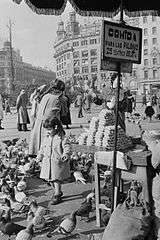
In 1940 Urraca published wartime memoirs Así empezamos;[129] the work contained homage references to Franco, but was designed as praise of males and especially females who contributed to the Nationalist war effort.[130] The work steered clear of assailing the Republican opponents;[131] it highlighted serenity of serving the cause of God and Spain.[132] In Barcelona Urraca set up her own publishing house named MRUPSA,[133] which in the 1940s co-issued two biographical books she had written and edited herself: one dedicated to Francis Borgia and another one to Lola Montes;[134] she also published few books of other authors.[135] The enterprise ceased to operate in the late 1940s.[136] In 1949 Urraca was charged with fraud and sentenced to 6 years in prison; in 1950 she was additionally convicted to 3 years in prison for falsifying commercial documentation. It is not clear whether the charges were related to her publishing business and whether there was any politics involved. She was pardoned respectively in 1951[137] and 1952.[138]
As the family finances were sustained systematically only by military pension of her father, in mid-1950s Urraca started to give lessons in oratory skills.[139] Though initially she advertised also teaching castellano,[140] later she dropped this feature from her press ads, which were appearing regularly in the local newspapers until the late 1960s; the last identified was published when she was 70 years old.[141] Since the death of her father in 1965, having no close family Urraca was increasingly alienated, also by the changing lifestyle patterns of the Spanish society. She maintained particularly close relationship only with María Pilar Comín Ros, almost 20 years her junior and the Barcelona press pundit on women's fashion.
Late public activity

Upon termination of Urraca's term in the II. Consejo Nacional of Falange in 1942 she has almost entirely disappeared from politics, be it either this related to official Falangist structures, unofficial Carlist movement or semi-political Catholic organizations. In scholarly works on political life during Francoism she is almost absent, very few times appearing marginally in works dealing with post-war Carlism.[142] Her public activity – apart from organizing reunions, delivering charlas and editorial work, all intended mostly to sustain ailing family finances – was mostly about engagement in local parochial and municipal Christian initiatives. She is noted as busy in apostolate of the lay,[143] sort of going on with her earlier teaching work when running cursillos organized by España Cristiana,[144] and maintaining interest in social issues by animating Catholic charity.[145]
In the early 1940s Urraca was still noted as taking part in broad public Carlist initiatives. In 1942 she was among the distinguished guests present at the Montcada i Reixac cemetery, attending memorial service to the fallen requetés and led by the Catalan Carlist leader Maurici de Sivatte by the Mausoleum, erected 2 years earlier.[146] None of the sources consulted refers to her engagement in Carlist political structures; some authors claim that the Carlists have never forgiven her the 1937-1942 engagement in Falange.[147] It is not clear what stand – if any – she took when faced with fragmentation of Carlism, especially the Carloctavista breakup in the 1940s and the Sivattista secession in the 1950s.[148] The official propaganda ignored her; her old-time rival, Pilar Primo de Rivera, made sure Urraca does not grow to prominence and the feminine model she advanced was not in line with masculine domination in public life, advanced by Francoism.[149] She is noted, however, as taking part in various commemorative events organized by Catholic or social organizations.[150] She also remained in touch with some personalities from both the Carlist and Republican camp.[151]

Urraca increased her public profile by the end of her life, re-engaging in Carlism. As at that time the movement was torn between the Traditionalists and the socialists from Partido Carlista, she sided with the former; in 1972 she co-signed a document issued by Junta Nacional del Requeté, which lambasted Carlos Hugo as the one abandoned the Carlist standard.[152] Urraca remained engaged in anti-hugocarlista backlash also later on, her last voice on the issue was heard in 1974.[153] Also during transición she took part in cultural events related to orthodox Carlism.[154] In return, she was berated by the Partido Carlista propagandists as traitor and "enfermera de Franco".[155] In the late 1970s she is known to have neared the post-Francoist búnker; in 1976 she lent her support to Blas Piñar and his Fuerza Nueva;[156] in 1977, shortly before official dissolution of Movimiento Nacional, she still used to frequent its Barcelona premises, recorded as affable, restrained, but energetic and committed to her ideals.[157] Until her death she considered herself a Carlist. In a letter sent to La Vanguardia in 1982, Urraca proudly confirmed her lifetime identity.[158]
Reception and legacy
In the 1930s hailed by the Right as electrifying orator and ridiculed by the Left as political troglodyte, after the Civil War Urraca has almost fallen into oblivion, save for three of her scarcely popular books. In the tightly censored media of the late 1940s an ex-Republican soldier turned graphics artist, Miguel Bernet Toledano, was permitted to create and publicize her malicious alter-ego known as Doña Urraca, a comics figure to become iconic character in the Spanish print. A direct reference has never been made;[159] some claim the cartoon figure had nothing to do with Urraca Pastor,[160] some maintain that there is little doubt the ugly black-dressed witch, keen to abuse the weak with a sole purpose to do evil[161] was aimed to mock her.[162] During transición she took the brunt of long-suppressed Republican anger; a wartime Francoist agent in France, an unrelated Pedro Urraca Rendueles,[163] was presented as „Urraca Pastor"[164] and there was even a 1979 theatric play featuring him as a villain involved in execution of Companys.[165] Shortly before death she was mocked as a mustached nurse by the Noble-prize winner José Cela in his Mazurca para dos muertos (1983); in literature she also appears - as bulky and ugly conspirator - in Inquietud en el Paraíso (2005) by Óscar Esquivias.
In historiography she is approached as a representative of various social phenomena rather than as a personality herself. One author considers Urraca a typical sample of middle-class women politicized by rocky times of the Second Republic.[166] Another scholar advances a competitive thesis, namely that she engaged in public life mostly as a result of modernizing primoderiverista attempts combined with rising social activity of the Catholics.[167] Some point to social issues as a key thread of her activity,[168] some point to her traditional Catholicism[169] and some focus on feminism.[170] This approach is particularly popular, as Urraca is often mentioned when discussing growing role of women in the recent history of Spain.[171] Though in the Basque realm she is held responsible for executions of priests,[172] by many other scholars Urraca is viewed with cautious sympathy, as a person who was allegedly passionate about equality of the sexes,[173] social justice,[174] classless society and post-war reconciliation,[175] a victim rather than a culprit.[176]
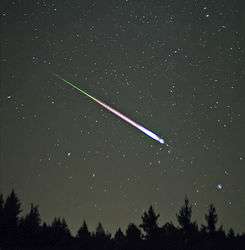
Except one early re-edition of Asi empezamos[177] none of Urraca's books has been re-printed. In Carlist historiography she either tends to be ignored by Traditionalist writers[178] or to be abused by Partido Carlista militants.[179] Apart from a handful of related scholarly articles, she has earned one monograph so far, a master thesis in gender studies accepted at Universidad de Salamanca in 2012. In a remote tiny Andalusian village of La Dehesa there is a street commemorating Urraca Pastor.[180] An internet myth has it – information not confirmed by any scholarly work – that Urraca was responsible for Roman Catholic re-conversion of Dolores Ibarruri few years before death.[181]
Footnotes
- María Dolores Andrés Prieto, La mujer en la política y la política de la memoria. María Rosa Urraca Pastor, una estrella fugaz [MA thesis in Gender Studies], Salamanca 2012, p. 16; some sources claim she was born 1908, see María Rosa Urraca Pastor entry [in:] euskomedia service, available here, or Iker Gonzalez-Allende, ¿Ángeles en la batalla?: Representaciones de la enfermera en Champourcin y Urraca Pastor durante la guerra civil española [paper of Modern Languages and Literatures Department, University of Nebrasca], Lincoln 2009, p. 86. According to a municipal record of Barcelona reproduced by familysearch (available here) she was born on December 31, 1899
- Andrés Prieto 2012, p. 18
- Juan Urraca Sáenz's certificate of birth, available here
- Boletín Oficial de la provincia de Logroño 25.08.1882, available here
- La Vanguardia 24.04.65, available here
- La Vanguardia 24.04.65
- Antonio Manuel Moral Roncal, María Rosa Urraca Pastor: de la militancia en Acción Católica a la palestra política carlista (1900–1936), [in:] Historia y política: Ideas, procesos y movimientos sociales 26 (2011), p. 201
- La Rioja 31.01.07, available here
- La Correspondencia Militar 06.01.13, available here, later promoted to 2nd class, La Correspondencia Militar 07.05.13, available here
- Diario Oficial de Ministerio de la Guerra 25.08.28, p. 565, available here, Antonio Manuel Moral Roncal, Auge y caída de una líder carlista en le franquismo: María Rosa Urraca Pastor, [in:] Aportes: Revista de historia contemporánea 81 (2013), p. 65
- La Vanguardia 21.12.41, available here
- Rafaela Pastor Ortega's certificate of death, available here
- both the 1941 obituary of the mother (La Vanguardia 21.12.41, available here) and her certificate of death (available here) refer only to María Rosa as her child
- J.F.F., Urraca Pastor (María Rosa) entry, [in:] Enciclopedia Espasa, Supplement, Madrid 1935 [1980 reprint, ISBN 8423945847], p. 179
- María Rosa Urraca Pastor, Así empezaron, [in:] Fundacion Nacional Francisco Franco website, available here
- La Vanguardia 24.04.65
- „a él [father] y a mi madre debo el caldo de cultivo en que crecí: familia profundamente cristiana y practicante", La Vanguardia 05.11.82, available here
- La Vanguardia 26.01.72, available here; in 1982 she confirmed that „no soy hija de carlista", La Vanguardia 05.11.82
- Andrés Prieto 2012, p. 49
- La Vanguardia 26.01.72, Moral Roncal 2013, p. 65
- Moral Roncal 2011, p. 202, Moral Roncal 2013, p. 65
- Andrés Prieto 2012, p. 25, 41, Moral Roncal 2011, p. 201
- she admits having listened to Besteiro and Unamuno, La Vanguardia 26.01.72
- „me gustaban [...] llevar melena y falda corta", Andrés Prieto 2012, p. 41
- Moral Roncal 2011, p. 206, Moral Roncal 2013, p. 67
- Andrés Prieto 2012, p. 42
- Moral Roncal 2011, p. 203, Moral Roncal 2013, p. 65
- Urraca Pastor (María Rosa) entry, [in:] Enciclopedia Espasa p. 179
- Moral Roncal 2011, p. 204
- Moral Roncal 2011, p. 204, Moral Roncal 2013, p. 66
- Brian D. Bunk, Ghosts of Passion: Martyrdom, Gender, and the Origins of the Spanish Civil War, Durham 2007, ISBN 9780822339434, p 39, Miren Llona González, El feminismo católico en los años veinte y sus antecedentes ideológicos, [in:] Vasconia 25 (1998), p. 296
- Andrés Prieto 2012, p. 22, Moral Roncal 2011, p. 206
- like lecture on „Cantos Asturianos" in 1925, El Sol 15.06.25, available here.
- La Vanguardia 26.01.72
- she was not first Carlist female propagandist. In the 1930s Dolores Gortázar Serantes was hailed as a veteran Carlist woman writer, yet her propaganda activity was formatted along 19th century lines. Urraca had no problem engaging in mixed-sex initiatives. Gortázar excelled in small, dedicated groupings, Urraca starred in broad-scale, general organizations. Gortázar focused on cultural and educational activities, Urraca engaged in open politics. Gortázar was brilliant in behind-the-scene, closed meetings, Urraca was an excellent speaker at mass rallies
- whom she considered th best female speaker ever, La Vanguardia 26.01.72
- Andrés Prieto 2012, p. 42
- La Vanguardia 26.01.72, Andrés Prieto 2012, p. 42
- La Vanguardia 26.01.72, Andrés Prieto 2012, p. 43, Moral Roncal 2011, p. 207
- La Vanguardia 26.01.72
- Andrés Prieto 2012, p. 43, Moral Roncal 2011, p. 202, Moral Roncal 2013, p. 65
- e.g. to Catalonia
- Andrés Prieto 2012, p. 43, Moral Roncal 2011, p. 207, Moral Roncal 2013, p. 67
- she cried having learnt the fall of the monarchy, Frances Lannon, The Spanish Civil War, 1936–1939, London 2002, ISBN 9781841763699, p. 83, she cried, Andrés Prieto 2012, p. 23
- Andrés Prieto 2012, p. 48
- Lannon 2002, p. 83
- Lannon 2002, p. 83, La Vanguardia 26.01.72, Andrés Prieto 2012, p. 55, Moral Roncal 2011, p. 208
- La Vanguardia 26.01.72, she gained local renown engaged in struggle to gain better conditions for female textile workers, Lannon 2002, p. 83
- Moral Roncal 2011, p. 208, Moral Roncal 2013, p. 67; the 1931 appearances in favor of Alfonsist candidates were her first public political addresses, Urraca Pastor (María Rosa) entry, [in:] Enciclopedia Espasa p. 180
- La Vanguardia 26.01.72
- Moral Roncal 2011, p. 209, Moral Roncal 2013, p. 69
- Moral Roncal 2011, p. 209
- Moral Roncal 2011, pp. 209-10
- Andrés Prieto 2012, pp. 43, 69
- La Vanguardia 26.01.72
- she was presidenta de Junta Diocesiana de ACM de San Sebastián, Moral Roncal 2011, p. 205-6, Moral Roncal 2013, p. 66
- Andrés Prieto 2012, p. 50
- La Vanguardia 26.01.72
- Robert Vallverdú i Martí, El Carlisme Català Durant La Segona República Espanyola 1931–1936, Barcelona 2008, ISBN 9788478260805, pp. 96, 101, 129
- e.g. in like Andalusia, Moral Roncal 2011, p. 210
- Andrés Prieto 2012, p. 69. Among the Carlist speakers she was among those who emphasized the social threads the most, Moral Roncal 2011, p. 214
- El Pensamiento Navarro, El Pensamiento Alavés, La Unión de Sevilla and Boletín de Orientación Tradicionalista, Andrés Prieto 2012, p. 68; she also formed editorial board of Ellas. Semanario de las mujeres españolas (1932-4), see < here
- e.g. for writing that the Azaña government is morally responsible for the Casas Viejas incident, Martin Blinkhorn, Carlism and Crisis in Spain 1931–1939, Cambridge 2008, ISBN 9780521207294, p. 99
- Moral Roncal 2011, p. 213-4
- Vallverdú i Martí 2008, p. 251, Jordi Canal i Morell, El carlismo: dos siglos de contrarrevolución en España, Madrid 2000, ISBN 8420639478, pp. 294-7
- La Vanguardia 26.01.72, Andrés Prieto 2012, p. 66, Moral Roncal 2011, p. 210, Moral Roncal 2013, p. 69; hostile press was also ridiculing her family name; urraca in Spanish means magpie, see Vida Nueva. Órgano de la UGT y del PSOE 07.07.33
- La Vanguardia 26.01.72, Moral Roncal 2011, p. 211, Moral Roncal 2013, p. 70
- she did not want to run, but was persuaded to, initially on Candidatura Católico-Agraria de La Rioja, Moral Roncal 2013, p. 72
- Andrés Prieto 2012, p. 70, Moral Roncal 2011, p. 215
- Andrés Prieto 2012, p. 70, Moral Roncal 2011, p. 215; having gained 31618 votes she missed 1702, Moral Roncal 2013, p. 72
- taking place and concluded that „la Comunión Tradicionalista me ha vendido por unas miserables pesetas Moral Roncal 2011, p. 216, Moral Roncal 2013, p. 72
- Andrés Prieto 2012, p. 71
- Moral Roncal 2011, p. 216; during public gatherings she was whistled down by the Falangists, Blinkhorn 2008, p. 280
- Fal Conde claimed that the Right won the 1933 elections mostly thanks to female votes; hence, he appreciated the need to keep the feminine electorate militant on his side, Moral Roncal 2011, p. 218
- Moral Roncal 2011, p. 216-7
- most refer to her as „key activist", see Andrés Prieto 2012, p. 71
- Moral Roncal 2013, p. 73-4
- Blinkhorn 2008, p. 212, She was not just a follower, but laid out her own ideas how to organize female structures, compare her Una idea y un proyecto. A las organizaciones femeninas tradicionalistas de España, published in El Siglo Futuro 29.01.34
- compared to 70,000 of Juventud Femenina de Acción Católica
- Andrés Prieto 2012, p. 72. In Navarre, there were 4.923 women in 33 agrupaciones, in the Vascongadas accordingly 4.350 and 50, in Valencia 6.555 and 60, in Barcelona 1.647 and 28, Moral Roncal 2011, p. 221
- Andrés Prieto 2012, p. 53-4
- despite a massive support campaign organised by various Carlist structures Moral Roncal 2011, p. 221-2
- it was set up to assist the members fined, imprisoned or otherwised penalised by the Republic, Andrés Prieto 2012, p. 71-2, Moral Roncal 2011, p. 219, Moral Roncal 2013, p. 74
- intended as a campaign of prayer and self-sacrifice Andrés Prieto 2012, p. 72, Moral Roncal 2011, p. 220, Moral Roncal 2013, p. 74
- when visiting a requete in a Madrid hospital she was searched and a hidden pistol was discovered, Andrés Prieto 2012, p. 87; slightly different version of the incident in Moral Roncal 2013, p. 64
- Andrés Prieto 2012, p. 72, Moral Roncal 2013, p. 64
- incorporated into Servicios de Sanidad Moral Roncal 2013, p. 76, Pablo Larraz Andía, Víctor Sierra-Sesúmaga Ariznabarreta, Requetés: de las trincheras al olvido, Madrid 2011, ISBN 8499700462, 9788499700465, p. 212, Julio Aróstegui, Combatientes Requetés en la Guerra Civil española, 1936–1939, Madrid 2013, ISBN 9788499709758, p. 436
- „Urraca had now experienced all the excitements of the battle – bomb explosions from aviation, shell bursts from artillery, and now flying bullets; the only thrill missing was a grenade attack, immediately rectified by a grenade burst a few metres above", Nicholas Coni, Medicine and Warfare: Spain, 1936–1939, New York 2013, ISBN 9781134170692, p. 45
- e.g. Lannon 2002, p. 83, Andrés Prieto 2012, p. 88; in October 1936 she moved to the Biscay section of the Northern front - Lannon 2002, p. 83, Andrés Prieto 2012, p. 88, Moral Roncal 2013, p. 79; her father was incarcerated by the Republicans and her mother was ill; she wrote to the Carlist king Alfonso Carlos so that he works with German and Austrian diplomatic services and get her father is released, Moral Roncal 2013, p. 79
- e.g. radio broadcasts, Moral Roncal 2013, p. 77
- Moral Roncal 2013, p. 81
- Moral Roncal 2013, p. 82
- Coni 2013, pp. 45-6
- see the account of Ernesto Carratala, a communist and well-known professor of linguistics in Barcelona, who claims when upon having been captured as Republican POW in Sierra de Guadarrama, he got his wounds treated by Urraca herself; later she confronted the crowd of Falangists and Requetes and prevented his execution, La Vanguardia 10.09.99, available here; see also the story of a Nationalist soldier „shouting abuse at prisoners. She reminded him of his Spanish chivalry and his Christian charity, and such were her powers of persuasion that he finished up sharing his rations and his tobacco with the prisoners", Coni 2013, p. 45, also Manuel Martorell Pérez, La continuidad ideológica del carlismo tras la Guerra Civil [PhD thesis in Historia Contemporanea, Universidad Nacional de Educación a Distancia], Valencia 2009, p. 86
- „otro desconocido ejemplo de intercesión de la líder carlista se produjo al ańo siguiente, cuando realizado declaración escrita a favor de Ernesto Ricort Vivó, en el juicio contra el chequista socialista Agapito García Atadell, al que se acusó de complicidad", Moral Roncal 2013, p. 78
- see account of José Miguel de Barandiarán, a Catholic priest sympathising with the Basques, who witnessed Mondragón captured by the Nationalist troops; according to his account, Urraca arrived with the front troops, harassed the local parochial priest and murmured „if that were up to me, you would all hang". The priest a number of his associates were indeed executed afterwards, J. M. Gamboa, J. C. Larronde (eds.), La guerra civil en Euzkadi. 136 testimonios inéditos recogidos por José Miguel de Barandiaran, Milafranga 2006, ISBN 9788488464033
- referred after Martorell Pérez 2009, pp. 98-99
- though she claimed that children can not be held responsible for deeds of their fathers, she also maintained that Republican orphans require additional educational effort, which was not necessary in case of Nationalist orphans, full quotation in Andrés Prieto 2012, pp. 93-4, Moral Roncal 2013, p. 82, Gonzalez-Allende 2009, p. 94
- María Beatriz Delgado Bueno, La Sección Femenina en Salamanca y Valladolid durante la guerra civil. Alianzas y rivalidades [PhD thesis accepted at Universidad de Salamanca, Faculrad de Historia y Geografia], Salamanca 2009, pp. 81, 247
- Moral Roncal 2011, p. 222
- Andrés Prieto 2012, p. 76
- Canal 2000, p. 340; some sources claim that as one 12 Carlists, César Alcalá, D. Mauricio de Sivatte. Una biografía política (1901–1980), Barcelona 2001, ISBN 8493109797, p. 135; the difference stems from treatment of Fal Conde, who was appointed but did not accept
- she was one of 3 females appointed, with number 8; Pilar Primo de Rivera came appointed with number 1 and Mercedes Sanz with number 10; Delgado Bueno 2009, p. 266
- none of the sources consulted explicitly states that Urraca was expulsed, though some claim that all those who accepted seats in Consejo were, see Juan Carlos Peñas Bernaldo de Quirós, El Carlismo, la República y la Guerra Civil (1936–1937). De la conspiración a la unificación, Madrid 1996, ISBN 9788487863523, p. 297
- e.g. on the Teruel front during the winter of 1937-38, Larraz Andía, Sierra-Sesúmaga Ariznabarreta 2011, p. 335
- Coni York 2013, p. 45
- a Madrid La Libertad deplored Nationalists' forced mobilisation of proletarian women "when ladies and damsels of Urraca Pastor hide in their homes, where they pray for the fascist cause" - La Libertad 02.11.37, available here,; the anarchist Solidaridad Obrera informed about the Moroccans raping Republican nurses and asked "what would Urraca Pastor say about this?" - Solidaridad Obrera 05.12.37, available here, while the Barcelona La Vanguardia ridiculed the propaganda of "doña Urraca" during the battle of Teruel – La Vanguardia 04.01.38, available here. For some reason her person attracted particular attention of the Republican propaganda, which overemphasized her role; she was even reported as a colonel, touring the frontlines by air accompanied by a personal adjutant, ABC (Madrid) 12.08.36, available here, or a newly appointed Nationalist minister of industry, ABC 01.08.36, referred after Moral Roncal 2013, p. 77. The ridiculing of Urraca persisted well into hostile historiography; a British scholar, Paul Preston, defines Delegación de Frentes y Hospitales as „a patrician welfare organization headed by the Carlist Maria Rosa Urraca Pastor", Paul Preston, Doves of War: Four Women of Spain, Boston 2002, ISBN 9781555535605, p. 35
- during the Republic days Urraca was sometimes whistled down by the Falangists Blinkhorn 2008, p. 280
- Moral Roncal 2013, p. 84-5, Delgado Bueno 2009, p. 251
- Delgado Bueno 2009, p. 256
- Delgado Bueno 2009, p. 257-8
- Andrés Prieto 2012, p. 82, 89, Delgado Bueno 2009, p. 261; she was replaced by Casilda Ampuero
- like Rioja, Mercedes Peñalba Sotorrío, Entre la boina roja y la camisa azul, Estella 2013, ISBN 9788423533657, pp, 65, 135
- Delgado Bueno 2009, p. 291
- La Vanguardia 06.06.39, available here
- Boletin Oficial del Estado 01.06.39, p. 2996, available here
- Moral Roncal 2013, p. 87
- Andrés Prieto 2012, p. 102
- Andrés Prieto 2012, p. 8
- widow of the late Carlist Aragon leader Jesús Comín Sagüés
- La Vanguardia 22.03.84, available here
- it might have counted that García Escámez, her old-time commander from the 1936 campaign in Sierra de Guadarrama, was appointed military governor of the province, Moral Roncal 2013, p. 87. In the 1950s she lived at Calle Consejo del Ciento 359, La Vanguardia 03.03.60, available here
- e.g. honoring musicians (Sorrosal, José Clará y Eduardo Marquina) singers (Gianna Pederzini) or painterns (Fernando Álvarez de Sotomayor, Marcelino Santa María), playing theatrical pieces etc., Moral Roncal 2013, p. 87
- La Vanguardia 07.08.40, available here
- the last one identified in appeared in 1947, see La Vanguardia 19.11.47, available here
- Pensamiento alaves' '09.10.40, available here
- Diario de Zamora 19.03.44, available here
- La Vanguardia 05.03.41, available here; she also took part in other cultural events, see Ritmo 01.04.43, available here
- Andrés Prieto 2012, p. 89, detailed discussion in Gonzalez-Allende
- Andrés Prieto 2012, p. 89-90
- e.g. it emphasized resspect for the enemy wounded, Gonzalez-Allende 2009, p. 93
- Gonzalez-Allende 2009, p. 88. Some scholars point to alleged incompatibility between ever-encompassing maternophilia and repeated masculine identifications, both neighboring in the book, e.g. when stressting that she was a Carlist rather than a Margarita and when she mixed with soldiers, Gonzalez-Allende 2009, pp. 90, 103
- "María Rosa Urraca Pastor Sociedad Anónima", Andrés Prieto 2012, p. 91
- Andrés Prieto 2012, p. 91
- Fernand J. Sautés, Autopsia, cara y cruz del drama francés 1939–1944 (1946), Emilia Pardo Bazán, Los pazos de Ulloa (1944) and Armie [?], Maria Cristina de Habsburgo – reina de España (1945). The last one is intriguing not only because of anonymous and unidentified author. The book highlighted the person of the Alfonsist queen, while Urraca was earlier on good personal terms with the Carlist queen
- later on Urraca kept working on another book, dedicated to Mariology, but this one has never appeared in print, see La Vanguardia 26.01.72, Moral Roncal 2011, p. 222
- BOE 13.06.51, available here
- BOE 01.02.52, available here
- Moral Roncal 2013, p. 88, the first one identified appeared in 1957, see La Vanguardia 13.10.57, available here
- La Vanguardia 06.03.58, available here
- La Vanguardia 07.10.70, available here
- Francisco Javier Caspistegui Gorasurreta, El naufragio de las ortodoxias. El carlismo, 1962–1977, Pamplona 1997; ISBN 9788431315641, pp. 138, 271, Robert Vallverdú i Martí, La metamorfosi del carlisme català: del "Déu, Pàtria i Rei" a l'Assamblea de Catalunya (1936-1975), Barcelona 2014, ISBN 9788498837261, p. 92
- Moral Roncal 2011, p. 222
- Moral Roncal 2013, p. 87
- CNT 27.01.57, available here
- Vallverdú i Martí 2014, p. 92
- Andrés Prieto 2012, p. 93
- e.g. she is only once and very casually mentioned in Vallverdú i Martí 2014, not having been listed at all in César Alcalá, D. Mauricio de Sivatte. Una biografía política (1901–1980), Barcelona 2001, ISBN 8493109797, the book which deals extensively with Catalan Carlism of the 1940s, 1950s and 1960s
- Gonzalez-Allende 2009, p. 99
- Moral Roncal 2013, p. 88
- some time during Francoism visited by Ernesto Carratalá in Barcelona, the Republican POW spared execution due to Urraca's intervention; he brought her flowers; Moral Roncal 2013, p. 78, Martorell Pérez 2009, p. 86
- Caspistegui Gorasurreta 1997, p. 138
- Caspistegui Gorasurreta 1997, p. 271
- she provided a foreword opening a promotional meeting of a book El carlismo en el ser de España by Felio Villarublas, see La Vanguardia 15.03.77, available here
- see the abusive title and contents of a sub-chapter María Rosa Urraca Pastor, la enfermera de Franco, contained in section named Gallery of traitors, replicated in a number of books by Josep Carles Clemente and published until today, e.g. José Carlos Clemente, Breve historia de las guerras carlistas, Madrid 2011, ISBN 9788499671697, p. 235
- Fuerza Nueva 22.05.76, available here
- Juan Fernández Krohn, Sindrome (joseantoniano) de Alicante, [in:] Juan Fernández Krohn desde Bélgica blog, 16.09.2013, available here
- La Vanguardia 05.11.82; and remained also a fundamentalist Catholic adhering to the Lefebvre format, Krohn 2013
- there were also some visual differences between a character and its model: Doña Urraca was skinny-thin - Urraca Pastor was well-built, Doña Urraca wore glasses – Urraca Pastor did not, Doña Urraca wore black – Urraca Pastor preferred lighter colours
- Krohn 2013; detailed discussion at La bruja y los paisanos: Doña Urraca de Jorge y varios señores normales, [in:] De Todo Un Poco blog 14.05.2011, available here
- Krohn 2013
- Andrés Prieto 2012, p. 94
- Iñaki Mirena Anasagasti Olabeaga, Urraca, el policía franquista que lideró agentes y espías en el exterior, [in:] ianasagasti blog, available here
- Ressó June 1979, p. 14, available here, this either confusion or intended manipulation persisted well into the 1990s, see El Pais 23.07.96, available here
- Plaça Gran 01.12.79, available here
- Lannon 2002, p. 83
- Andrés Prieto 2012, p. 68, Moral Roncal 2011, p. 223
- compare Moral Roncal 2011
- compare Gonzalez-Allende 2009
- compare Andrés Prieto 2012
- see e.g. Isabel Morant Deusa, María Ángeles Querol, Historia De Las Mujeres En Espana Y America Latina: Del Siglo XX a Los Umbrales Del Xxi, Madrid 2005, ISBN 9788437622903, p. 158; Las mujeres y la Guerra Civil española, Madrid 1991, ISBN 9788477990475, pp. 18, 189, 296; Mari Luz Esteban, Mila Amurrio, Feminist Challenges in the Social Sciences: Gender Studies in the Basque Country, Reno 2010, ISBN 9781935709015, pp. 92-93, Llona González 1998
- Un libro recoge 136 testimonios inéditos de la Guerra del 36 recogidos por Barandiaran, [in:] Gara 25.05.06, available here, Diario Vasco 22.10.06, available here
- Lannon 2002, p. 83, though she also „estaba convencida de que la mujer podía servir al país fuera de casa", La Vanguardia 26.01.72
- „tuve siempre un carácter independiente un instinto de rebeldía contra todo lo injusto. Juzgaba como tal el régimen económico en que vivía la sociedad y me atraía con irresistible vocación la defensa del humilde, del expoliado, del que sufría el despotismo brutal de un sistema positivista que todo lo materializaba, permitiendo la existencia de castas y de clases sociales en lucha permanente" – opinion of Andrés Prieto 2012, p. 49
- Lannon 2002, p. 83
- „High ideas for a better society co-existed with dedication to political movements that were ruthless and vengeful" – opinion of Lannon 2002, p. 83
- re-published at unspecified time in Barcelona, most likely in the 1940s, see here
- she is not mentioned in a section discussing Margaritas and Socorro Blanco by a classic Traditionalist historian in Melchor Ferrer, Breve historia del legitimismo español, Madrid 1958, pp. 135-6; similarly, she is not a single time mentioned in another classic Carlist work, Roman Oyarzun, Historia del carlismo, Madrid 1969; however, she is a number of times listed in detailed work of Melchor Ferrer, Historia del tradicionalismo español, vol. XXX, Seville 1979
- Andrés Prieto 2012, p. 93
- Andrés Prieto 2012, p. 92
- compare comments below La Pasionaria, temida líder comunista, se confesó y comulgó antes de morir... católica, [in:] Religión en Libertad 11.04.13, available here; Urraca knew Ibarruri from the early Bilbao days and both remained on correct personal terms; their relationship, after the war somewhat cordial, was maintained at a distance even in the early 1970s, when Ibarruri was in Moscow, La Vanguardia 26.01.72
Further reading
- María Dolores Andrés Prieto, La mujer en la política y la política de la memoria. María Rosa Urraca Pastor, una estrella fugaz [MA thesis], Salamanca 2012
- Martin Blinkhorn, Carlism and Crisis in Spain 1931–1939, London 1987, ISBN 9780521086349
- María Beatriz Delgado Bueno, La Sección Femenina en Salamanca y Valladolid durante la Guerra Civil. Alianzas y rivalidades [PhD thesis], Salamanca 2009
- Iker González-Allende, ¿Ángeles en la batalla?: Representaciones de la enfermera en Champourcin y Urraca Pastor durante la guerra civil española, [in:] Anales de la literatura española contemporánea 34 (2009), pp. 83–108
- Antonio Manuel Moral Roncal, Auge y caída de una líder carlista en le franquismo: María Rosa Urraca Pastor, [in:] Aportes: Revista de historia contemporánea 81 (2013), pp. 63–96
- Antonio Manuel Moral Roncal, Las carlistas en los años 30: ¿De ángeles del hogar a modernas amazonas?, [in:] Revista Universitaria de Historia Militar 7/13 (2018), pp. 61–80
- Antonio Manuel Moral Roncal, María Rosa Urraca Pastor: de la militancia en Acción Católica a la palestra política carlista (1900–1936), [in:] Historia y política: Ideas, procesos y movimientos sociales 26 (2011), pp. 199–226
External links
- Rulebook of the Margaritas
- Margaritas as nurses (pro-Carlist site)
- Carlist nurses (a blog piece)
- I am a Carlist; 1982 Urraca's letter to La Vanguardia
- Urraca at 32 (photo)
- Urraca Pastor in her 70s (photo)
- Dona Urraca cartoon
- Urraca's obituary
- Por Dios y por España; contemporary Carlist propaganda
| Wikimedia Commons has media related to María Rosa Urraca Pastor. |
